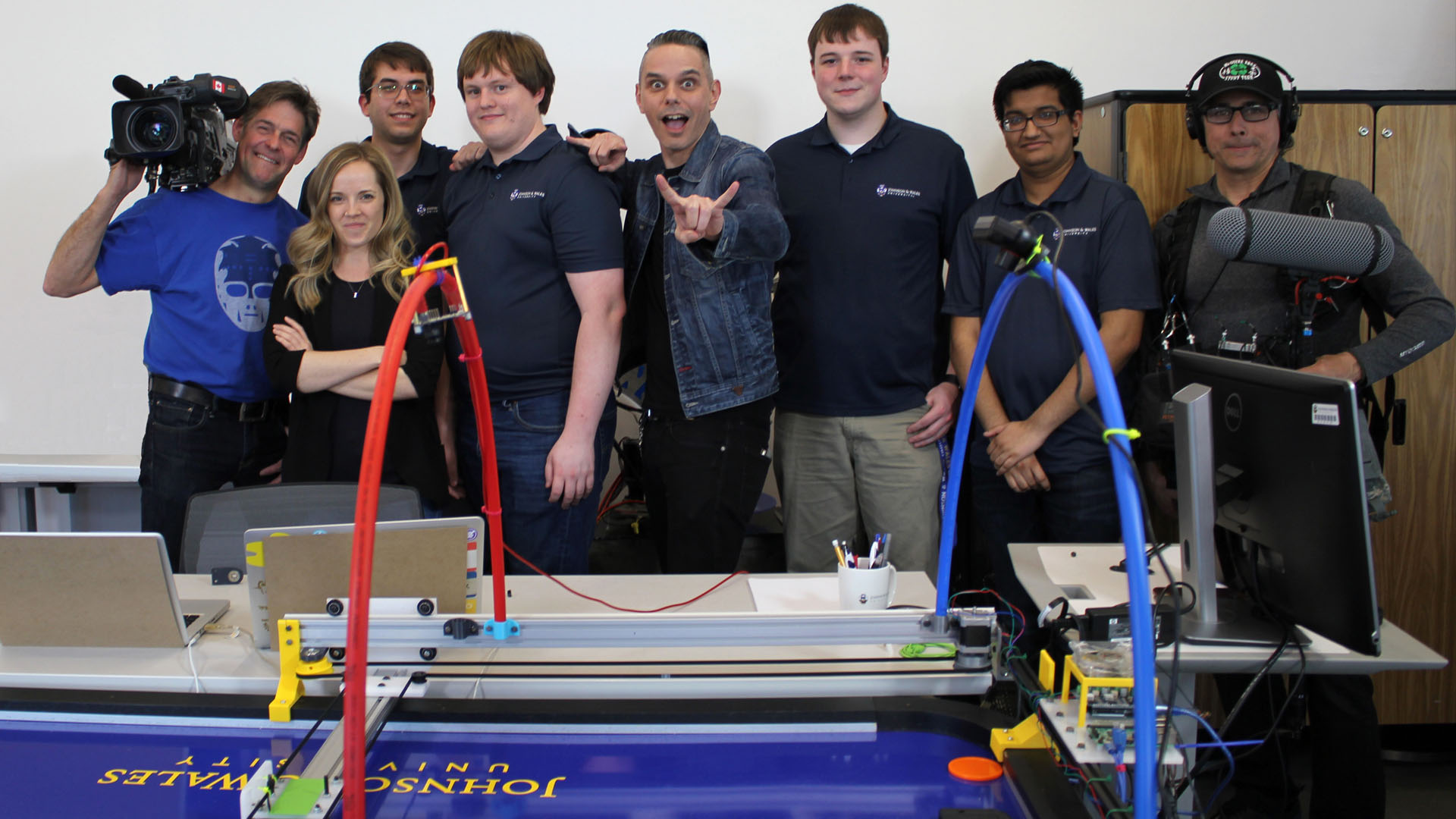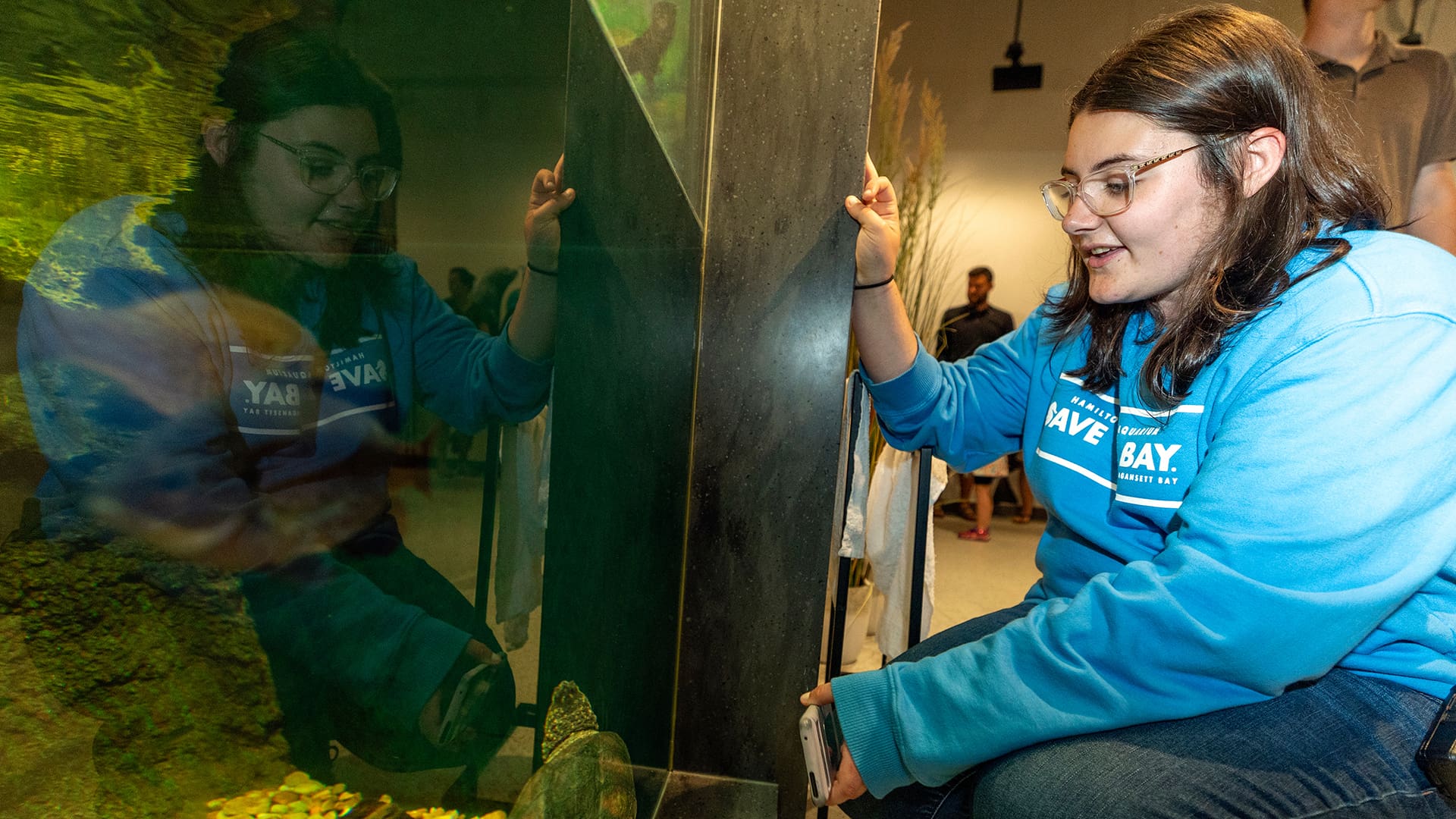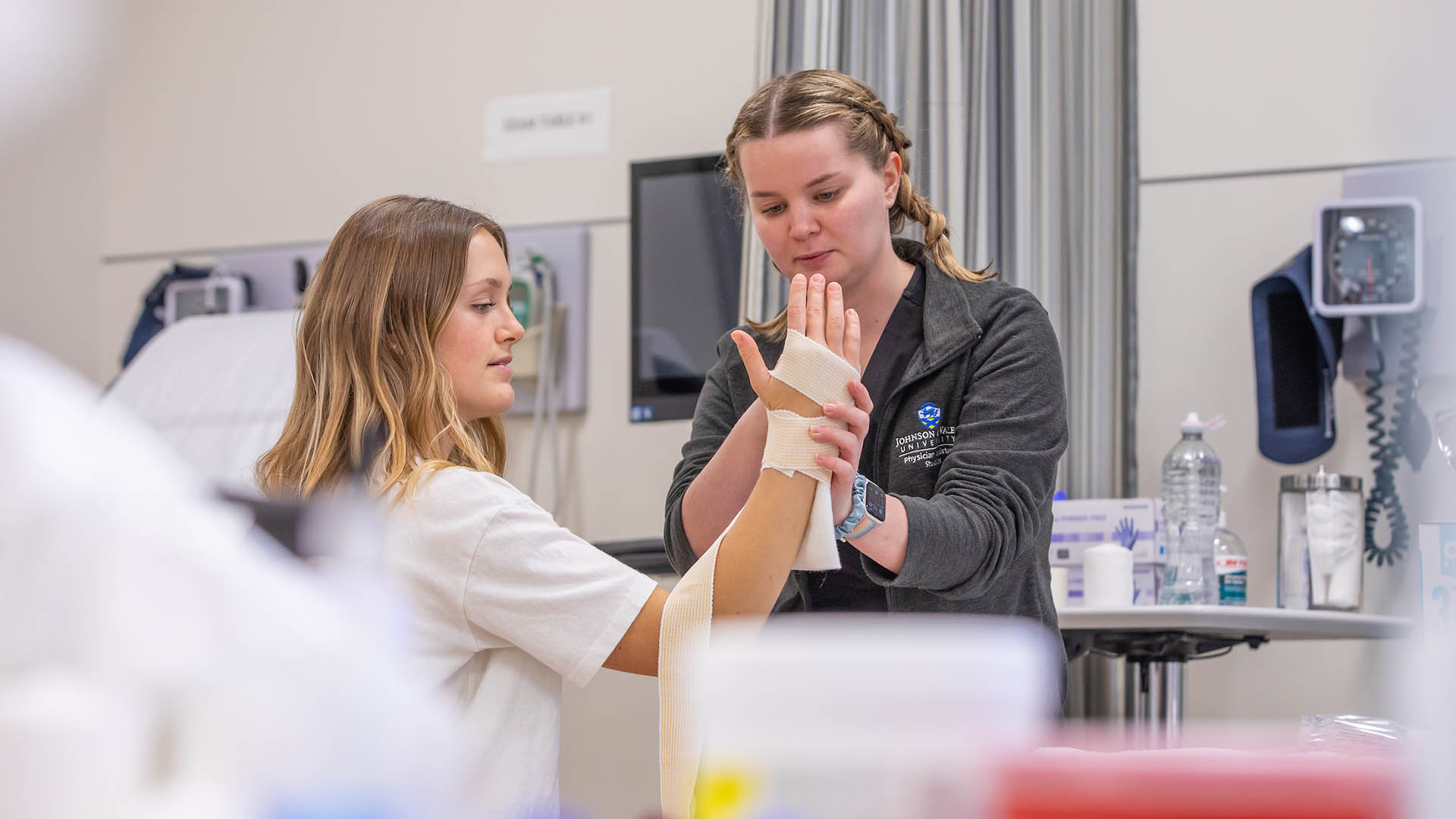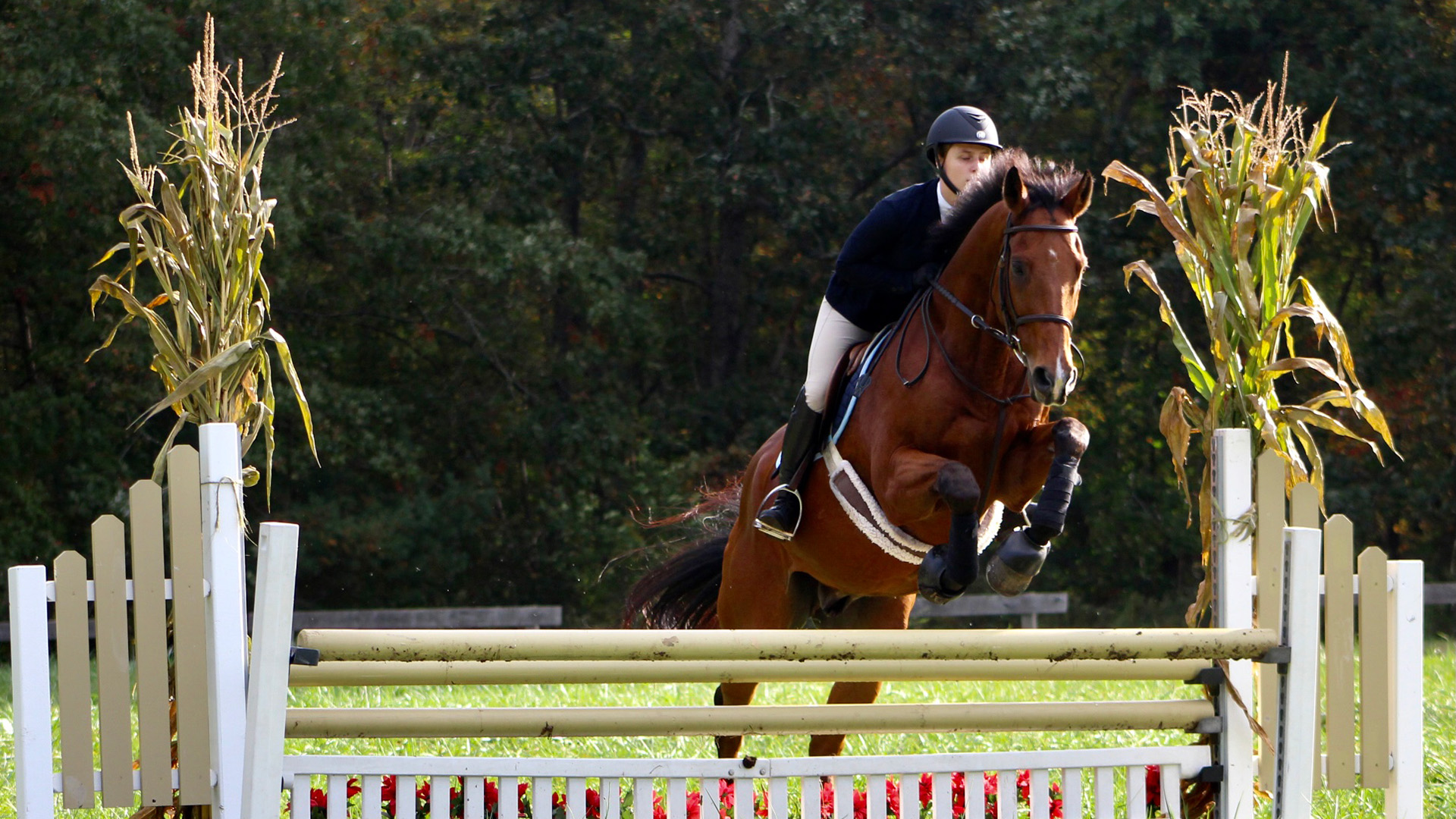JWU Students’ Robotic Air Hockey Table Featured on Daily Planet TV Show
Editor’s Note: As of Summer 2025, Johnson & Wales University integrated the College of Engineering & Design into the John Hazen White College of Arts & Sciences. This change reflects the university’s ongoing efforts to align programs with student interest and industry demand.
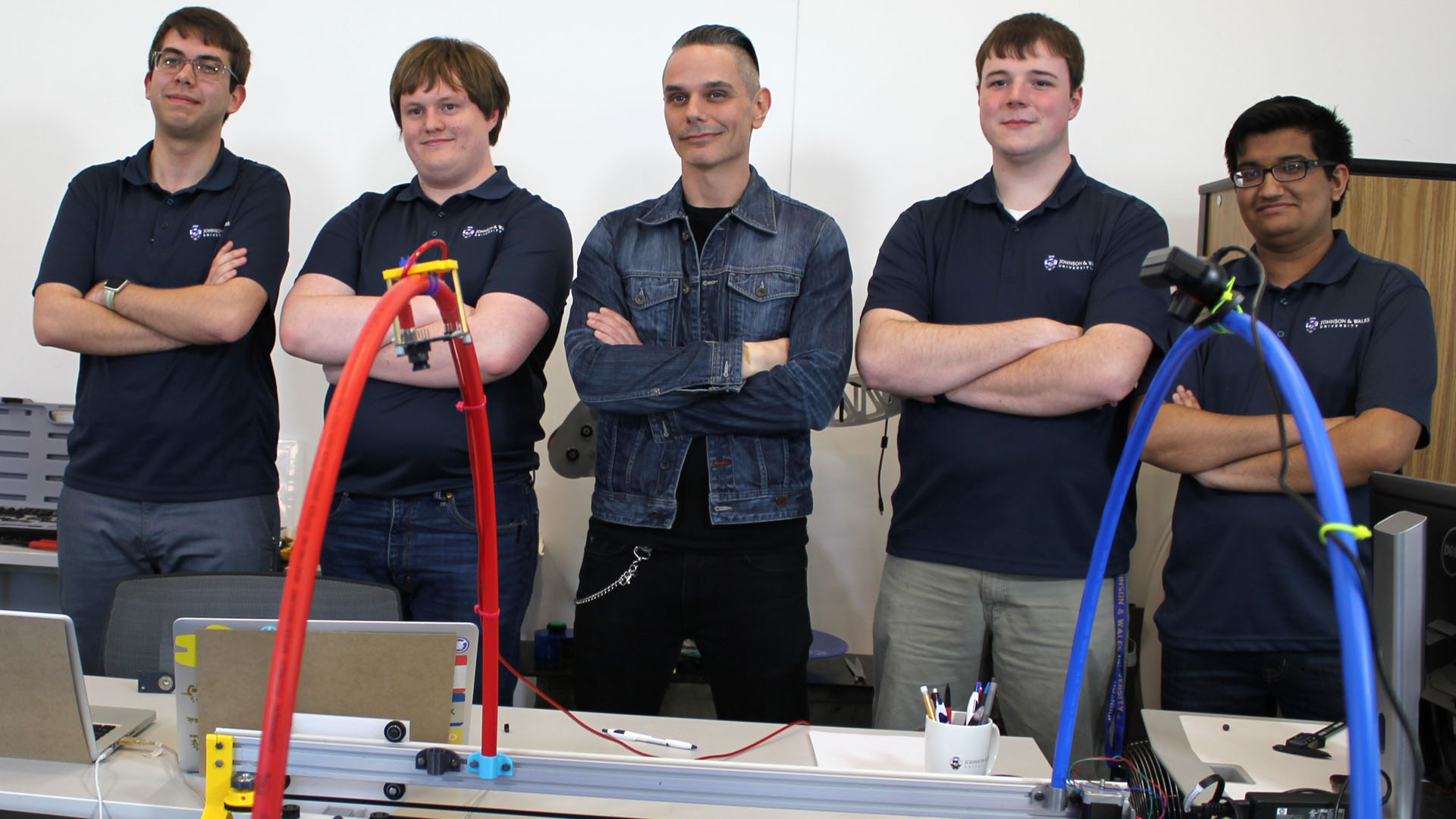
What happens when a group of friends at JWU’s College of Engineering & Design decide to build a robotic air hockey table just for fun? A crew from Discovery Channel Canada’s Daily Planet lands in Rhode Island ready to film a segment for their show.
Just a couple of weeks ago, Patrick Wynn ’20 Software Engineering, Dennis Collins ’19 Robotics Engineering, Maharshi Patel ’21 Robotics Engineering and Cameron Shimer ’19 Electronics Engineering, spent the day with Lucas Cochran, the tech correspondent on Daily Planet, shooting scenes for the show.
"It was kind of surprising for us."
“It was kind of surprising [for us],” says Wynn. “We were all in class, and then Dean Tweedie walked by and pointed at us from outside. That’s how we ended up finding out about it. We thought we were in trouble, but it ended up being something pretty cool.”
Why a Robotic Air Hockey Table?
“We just wanted to build something fun for people to play with,” says Wynn. “The Robot Block Party [in Providence] was coming around, so we thought, ‘let’s build a robotic air hockey table.’ Then things just kind of took off from there.”
"We just wanted to build something fun for people to play with."
With this in mind, they bought a cheap air hockey table off Craig’s List, and retrofitted it with a camera vision system to track the puck during games.
“We hooked up a robot to the table with a mount that hangs over the table, so it looks straight down on it and then is able to see everything that it needs to see,” Wynn adds.
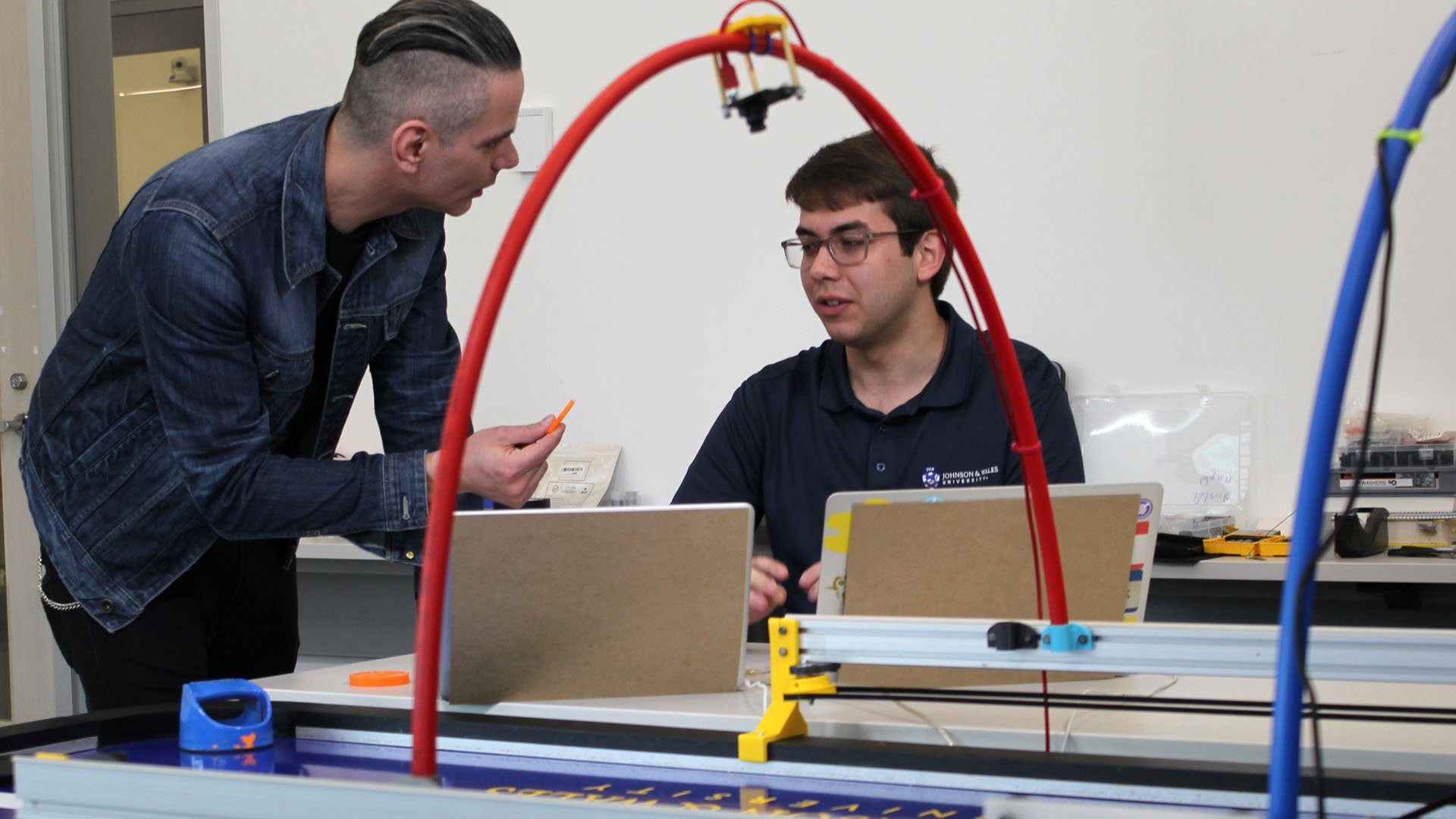
Using AutoCAD, SolidWorks, 3-D printers and other tools available to them in the college’s Innovation Lab, the team also designed and built a set of tracks, pulleys, brackets and more to allow the robot to move and block incoming pucks.
“It’s pure math,” Wynn told Cochran during the filming. “A lot of math is involved in trying to figure out the [puck’s] trajectory, figuring out where the bounce is and just getting all the motors to move in the same direction.” He added that using hue, saturation and value (HSV) color models, the team can see a computerized version of the pucks and table to fine tune the system to only focus on the puck, making everything else disappear — which in the end makes for a more accurate and faster robot.
"It’s pure math."
Wynn says for the most part, he’s worked on writing the code for the camera system, while Collins focused more on CAD design and other mechanics. Patel and Shimer worked on creating support legs in SolidWorks and electrical backend systems, respectively.
Just Another Day at JWU
For the group of friends, the idea of being on television didn’t seem to faze them.
“When it came to actually filming and talking about [the project] with them, it wasn’t really all that stressful — it was more of a relaxed environment,” says Wynn. “They [crew] were fun to talk to — it was not that bad.”
Collins admitted to being a bit camera shy, but in the end pulled through without a hitch.
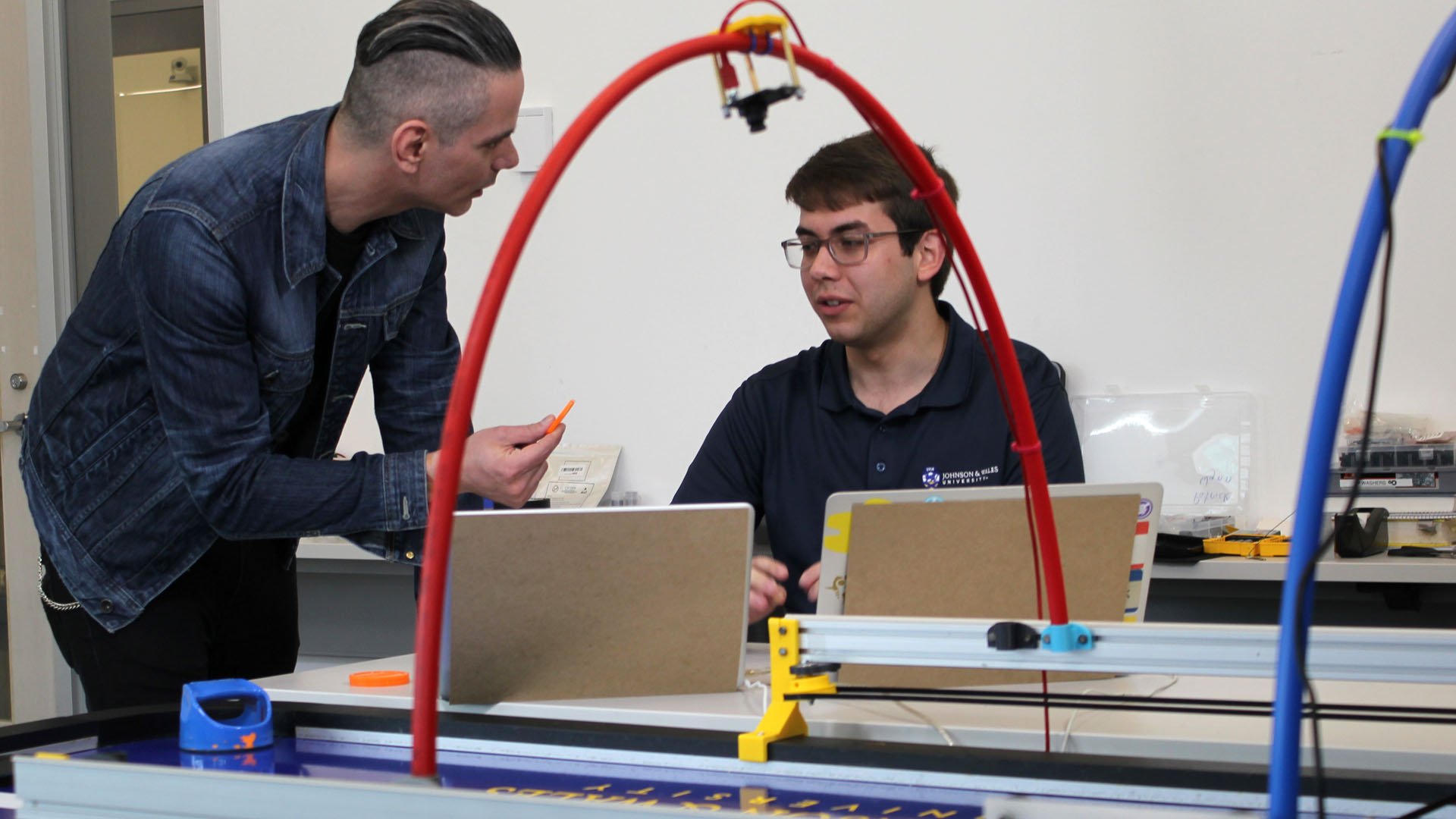
“I just had to tell myself, ‘It’s another conversation and just move on with life.’ I treated it as such, and I kind of ignored the fact that the camera was in my face the whole time,” he says.
"I kind of ignored the fact that the camera was in my face the whole time."
Now that the filming is done and summer break is coming, the students are taking a little break from the project.
“Next year we’ll jump back on it and make some more improvements,” adds Wynn. “We’re changing out the power supply, to give it more power because it kept cutting out every once in a while. We’ll be upgrading all the rest of the 3D printed parts and are still working on trying to figure out how to make the camera faster. We want to add another camera to it as well.”
TOP, L-R: PATRICK WYNN ’20, CAMERON SHIMER ’19, LUCAS COCHRAN FROM DAILY PLANET, DENNIS COLLINS ’19 AND MAHARSHI PATEL ’21.
